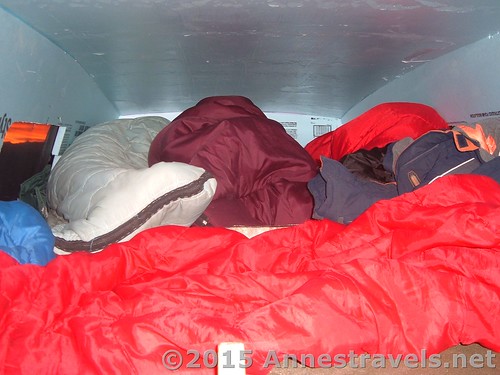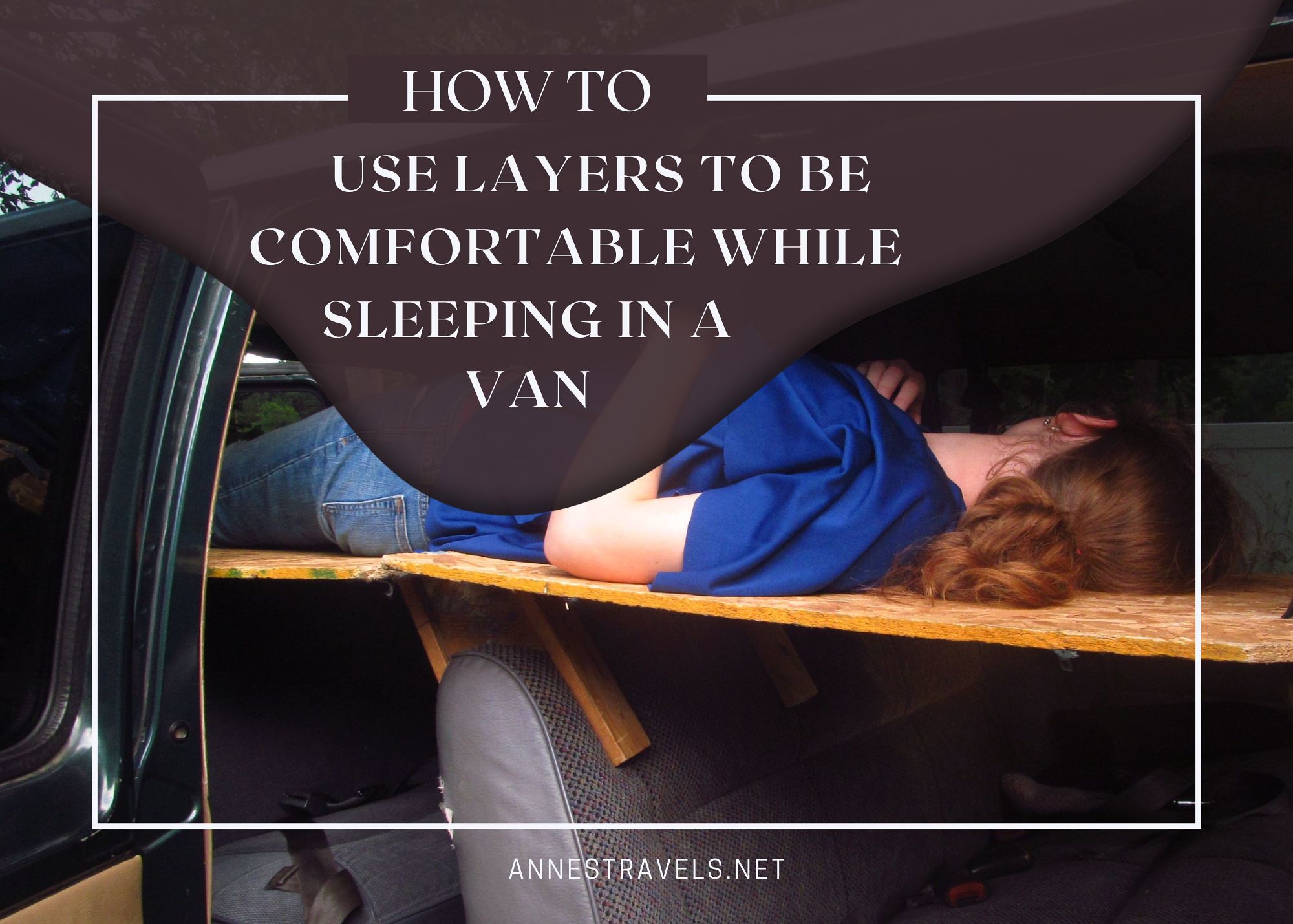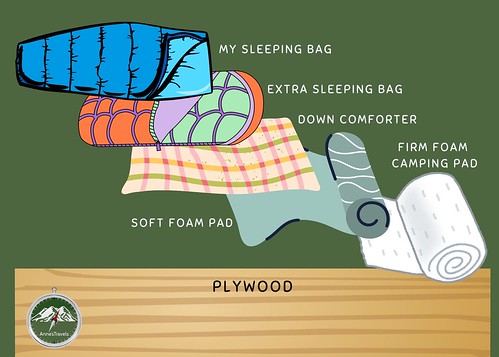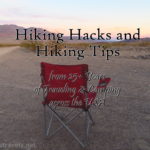I could have called this post, “How to sleep on plywood and not bruise your hips,” but I liked the other title better! In this post, I’d like to give you some tips on how to make a bed in a van more comfortable.
At this point, I sleep on a plywood platform in the back of the van. This is great for a few reasons – first, because I can store all of my gear in boxes on shelves below the platform, and second because it gives me more space than trying to squeeze down between the legs of the bench seats on the floor. The space behind the back bench seat in a Ford E150 has room for two of us on the plywood – we’ve squashed in a third, but that’s not very comfortable.

As I grow older, I find I need more padding beneath me while camping. It used to be that a sleeping bag and a floor car mat were all I needed to sleep quite comfortably on the van floor. Sadly, no more. Thankfully, I’ve been able to find ways to make my bed so cozy that, on my last trip, I was almost sorry I had to go back to sleeping in my own bed when we got home!
Layers!
I typically use a variety of layers beneath me while sleeping in my van. You’re welcome to choose from whatever you want.

Mattress
Many people choose to put down a foam mattress. I haven’t gone quite that high scale. This one folds up, but there are unfoldable ones, too.

Air Mattress
This is a mainstay of car-sleepers, especially models like this. I’m always worried that I’ll poke a hole in it and find myself flat on plywood for the rest of the trip. So this isn’t an option I’ve explored too far at this point.

Sleeping Bags
Sleeping bags are great in that they’re typically well-padded. I have a few old sleeping bags (mostly ones that have been used until they’re not that warm anymore, or I picked them up cheap at thrift shops). One or two of these underneath my normal sleeping bag is pretty comfy!

Down Blankets
Many years ago, whenever we would visit my grandparents, my sister and I would share the pullout couch in their living room. It wasn’t exactly comfortable, with springs poking us and the mattress caving toward the middle. One of the two of us got the brilliant idea of putting a down comforter beneath the fitted sheet. Bingo! It effectively softened the springs as well as created little nests so we didn’t roll into each other all night long.
I’ve found that these down comforters work well for softening plywood, too. Plus, if you get really cold, it’s right there waiting for you to wrap up and get cozy. This one is down alternative, but it should work similarly.

Foam Pads
I usually use a firm foam camping pad underneath me (like this one); on top of that, I’ll also use a softer foam pad (something like this one).

Memory Foam Bed Topper
Somewhere along the way, we ended up with a memory foam bed topper. It’s fantastic for softening plywood (and the bench seats – which is very good news to one of my group members who finds the benches too hard for her comfort). I can usually double up the double-bed size for double the softness. This one is similar to the one I own.
Here’s a Diagram!
So a typical set of layers looks like this: Plywood, firm foam pad, soft foam pad, down blanket, extra sleeping bag, second extra sleeping bag if I have one available, and then my own comfy blue mummy bag on top!
A Word of Warning…
My system works because I don’t sleep there for more than a few weeks at a time. Any kind of long-term sleeping arrangement will create condensation and moisture beneath your mattress/layers. You will need to air these out from time to time, or you will end up with mold. One way to avoid this is to place your layers or mattress on top of slats instead of a sheet of plywood – the airflow is better, reducing the likelihood of moisture buildup and mold. Even so, you should probably air out your bedding every few days.








